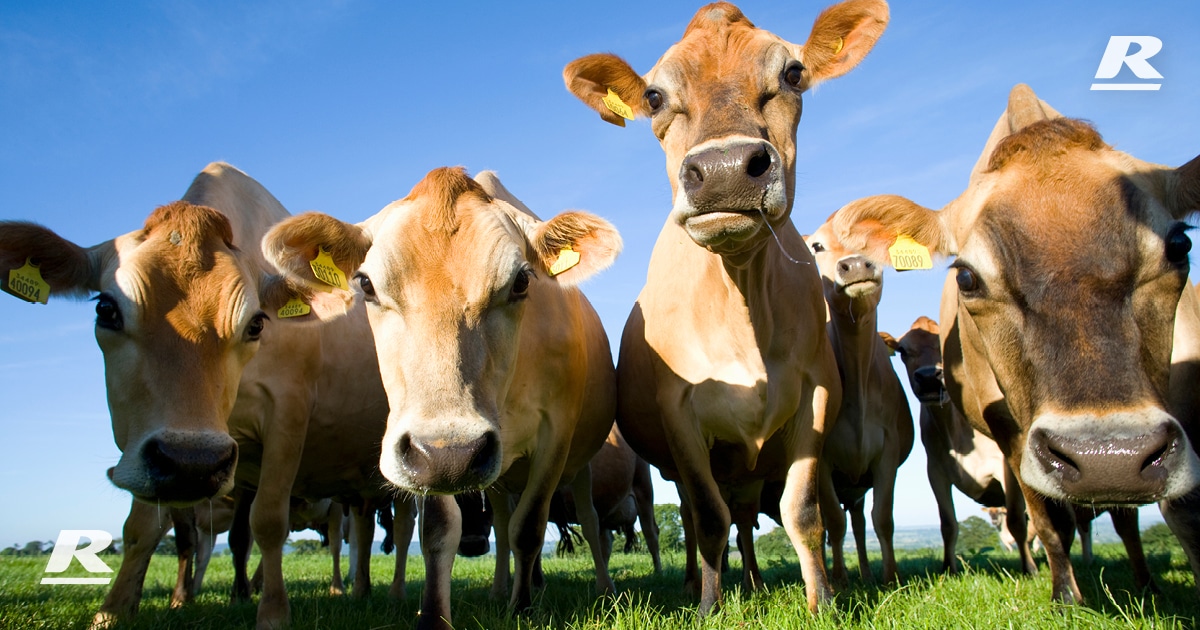The Importance of effective fibre in winter and spring
Fibre plays a crucial role in the diet of cows, providing them with extra energy and serving as an essential source of roughage that keeps the rumen bacteria and environment healthy. Just as humans require suitable living conditions for survival, rumen bacteria also have specific requirements to maintain their health and functionality.
One of their critical needs is a stable and consistent rumen pH level, ideally around 5.9 to 6.1. To meet these dietary requirements effectively, it is essential to understand what exactly constitutes effective fibre and how it impacts the well-being of cows.
In this article, we will explore the significance of effective fibre in the diet of cows, especially during the winter and spring seasons.
What is effective fibre?
- The cell wall (or structural carbohydrate) of plants is what provides fibre to a cow’s diet. Neutral Detergent Fibre (NDF) is a measure of all the dietary fibre, and encompasses both digestible and indigestible chemical fibre. Structural carbohydrates are slowly digested carbohydrates, compared to the quickly digested non-structural carbohydrates (sugars and starches from plant cell contents).
- Recommended total diet NDF levels for lactating cows are 30-35%.
- Physically effective fibre level refers to the ability of a fibrous feed to stimulate chewing and saliva production. Chewing decreases the particle size of feed so it can pass through the cow’s stomachs, and saliva contains buffers which help to manage the acidity from Volatile Fatty Acid (VFA) produced from carbohydrate digestion in the rumen. The greater the feed particle size, the greater its physically effective fibre level, and the more chewing that is stimulated. For a fibre to be considered physically effective, it needs to be at least 1.5cm long.
- Leafy perennial grass contains high levels of soluble sugars. As the grass plant matures, heading into summer, its cell walls thicken, stems and seed-heads develop, and the fibre levels in the plant increase. This explains why there is a commonly an increase in effective fibre in a diet in late spring and summer.
- Physically effective fibre is found in common feeds like mature grass, hay and silage. The industry recommends that 75% of the dietary NDF be physically effective for rumen bacterial growth and rumen health.
- Low levels of effective fibre in winter and spring can occur due to highly digestible but low pasture availability (winter) and fast rates of passage of highly-digestible grass (spring). Providing long fibre, keeping in mind that at least 3/4 of the total fibre must be effective, will help to manage the rumen environment and cow health.
How can I tell if I’m feeding enough, or too much effective fibre?
- Compared with other animal industries, the dairy industry is fortunate to have much practical information available to monitor to provide clues and feedback on feeding and performance. Adequate effective fibre in a diet can be recognized in several ways on-farm. If at least 50% of the milkers are chewing their cud a couple of hours after milking, this indicates good rumen health and the presence of effective fibre. In addition, the manure of milkers should have the consistency of porridge, with minimal undigested fibre or grain present. Milk fat percentages should be above protein percentages and not vary by more than 0.2% day-to-day.
- If there is too much effective fibre in a diet, manure will be dry and pile higher. Also, milk fat percentages may be higher than usual for the time of year, although this can also be present when fresh cows are losing weight or if there are high levels of fat in the diet. Too much effective fibre can fill up a cow’s rumen without adequate dietary energy & protein. Cows’ rumens may look full, but animals may not be achieving adequate dry matter intakes or litres; milk fat and protein yield can drop away unless this is recognized.
It’s also about timing
- A daily diet may contain enough effective fibre, but because cows eat different feeds at different times of the day, holding cows back from the paddock or from fodder straight after bail-feeding concentrates at milking can cause problems. Without chewable fibre access straight after milking, the rumen pH can remain below 5.8, inhibiting the rumen bacteria from growth and production of VFAs for cow health and milk production. The most productive and profitable cows need the right feed available at the right time of the day.
How can Reids help you with effective fibre?
- Getting the effective fibre levels right in a diet involves checking the diet is balanced and that provision of the various feeds is well-managed.
- Reid Stockfeeds can join you on-farm for helpful conversations, a paddock walk, stock and feed inspections to identify signs of good balance and feed management, including quantifying NDF & effective fibre levels.
- Your nutrition advisor can take a look at your feed delivery and management set-up and discuss options to achieve best availability and intake of effective fibre for different stock classes.
To find out more about the best animal feed or health management strategy for your herd, give us a call and have a chat to one of our nutritionist on 1300 REID FEED or enquire here >
Author
Joy Coulson
Sales & Nutrition Account Manager
